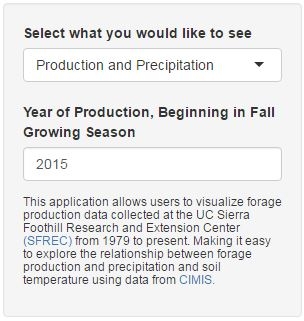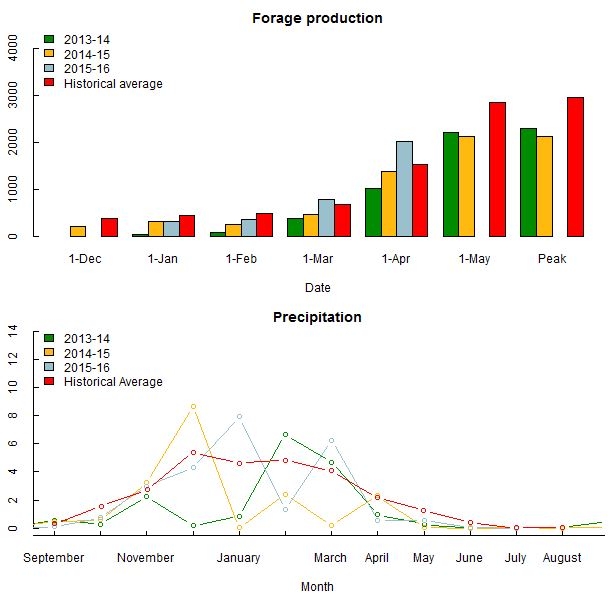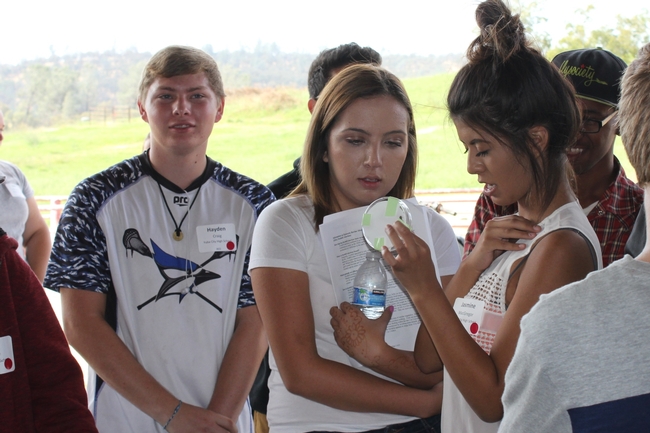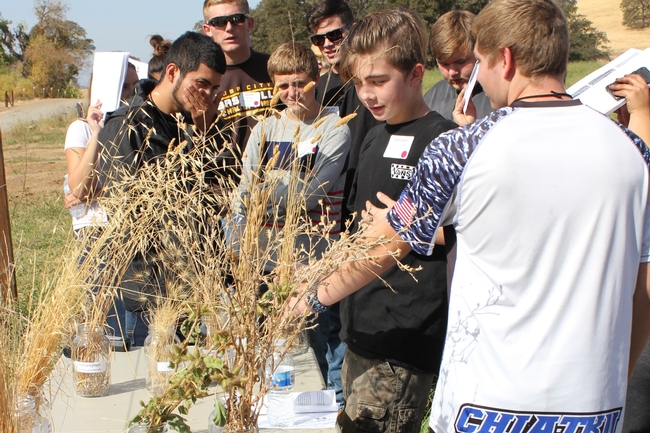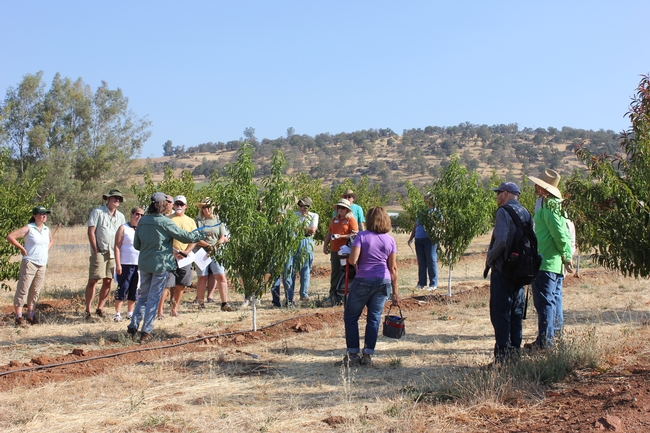- Author: Jack Cronin
The UC Sierra Foothill Research and Extension Center has nearly 40 years of rangeland forage production and environmental data. This information is widely used for assessing how current-year forage production compares to previous years and for forecasting potential trajectories of peak forage production for the current growing season. While these comparisons are valuable, until now visualization of this data was fairly cumbersome. SFREC has addressed this need by developing an interactive web application, which allows rapid and flexible visualization of all current and historic data.
Users of the web application are now able to examine current and historical rangeland production for any year between 1979 and the current year. The application should prove to be a useful resource for ranchers, extension specialists, landowners, rangeland managers, and curious individuals alike.
Users of the application will choose what dataset they would like to look at, and then they will select the time period in which they are interested. If soil temperature or precipitation are selected, the user will be able to select from a range of years.
With that background information in mind, let's get our hands on the application and take a look!
Click HERE to open up the web application.
Upon opening up the application, forage production and precipitation will be displayed for the current growth year (September – August). The application will display the following graphs shown at the bottom of this page.
Examining the data may lead to some interesting conclusions. On the lower graph, we can see that early season precipitation was below average until a wet January. 2015-16 had a drier than average February and a fairly wet March. Moving up to the production plot, we see that early season production was also below average, until a large amount of growth occurred between February 1st and March 1st. Production was well above average for the rest of the year, with nearly 1000 pounds per acre higher peak production than in an average year.
We can change the year that we are looking at by scrolling over the year on the left hand panel, and clicking up or down on the arrow as shown on the interface below.
Additionally, a user can type in the year they are interested in. Let's take a look at the 2007 growing season. Looking at the precipitation graph, 2007-08 was a dry year, in comparison to the historical average. From the same graph, 2005-06 was much wetter than average. Forage production in 2007-08 was nearly 1000 pounds per acre less than the average, while 2005-06 was nearly 1000 pounds heavier.
Soil temperature – an important measurement for germination and production – is also included in the application. If you select a range of a single year on the application, the historical average will also be displayed on the same graph.
The application will be updated frequently to provide users with valuable, up-to-date information. Environmental data will be updated once per month based on CIMIS outputs. Production data will be updated during the growing season as soon as field measurements are taken.
Feel free to explore the application and let us know what you think by leaving a comment below. We suggest bookmarking the application url if you would like to check in regularly. If you know someone who might be interested in looking at the data provided, share this blog post with them, or send them the link to the application.
This application was developed by Jack Cronin, a student employee working with SFREC this summer. Jack is currently studying Environmental Engineering at U.C. Merced, with a background and future interest in the rangeland profession.
- Contributor: Megan G Osbourn
- Author: Jeremy James
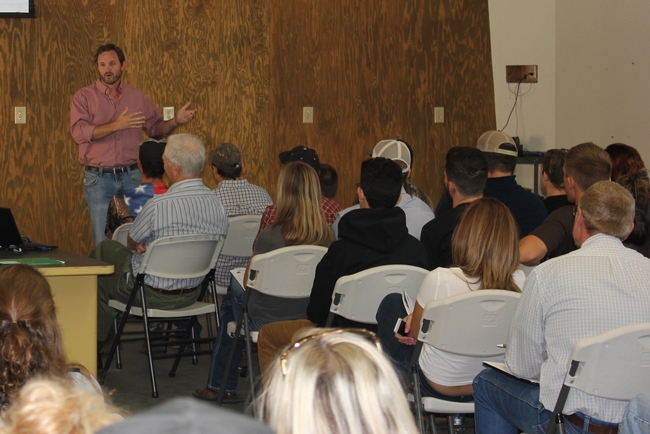
Assembly member James Gallagher, who has strong ties to local agriculture in the Sacramento Valley, kicked off the day with a forward looking key-note address that highlighted the important role the current generation of students will play in addressing California's agricultural and natural resource needs over the coming decades.
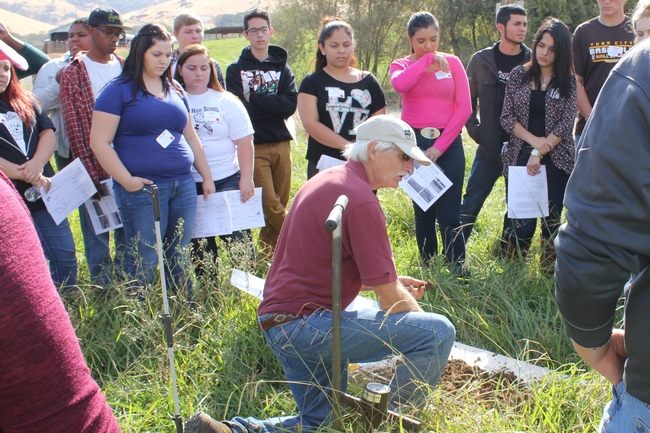
Sponsors including Robinson Ranch, Farm Credit West and Yuba-Sutter Farm Bureau and the time donated by FFA leaders and UC staff were instrumental in making the second year of this annual event a major success and a great opportunity for students to interact with ongoing research led by UC.
- Author: Nikolai Schweitzer
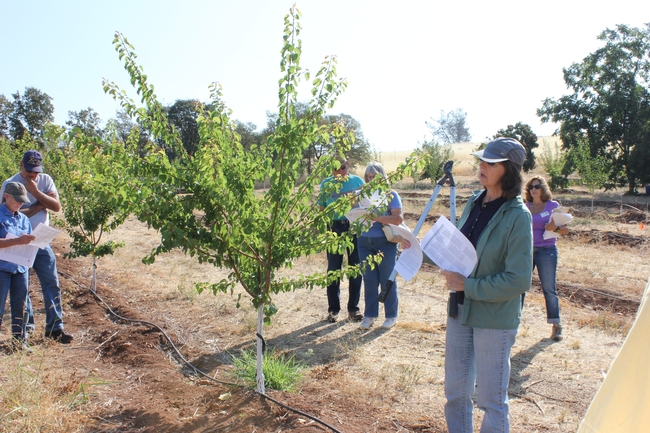
- planting different bareroot/potted fruit/nut tree varieties on a successive ripening curve
- important pre-planting timelines, methods and procedures
- demonstrating environmental success and/or stress on each fruit/nut variety
- illustrating summer pruning on apricot trees
- showing different irrigation methods, volume, rates
- options for dormant pesticide applications
Sierra Foothill Research and Extension Center and Sutter Yuba UCCE Master Gardener Program will host an early spring bareroot fruit/nut planting in 2016. If you are interested in attending, please contact Master Gardener Program Representative Heidi Sanders at 530-822-7515.
- Author: Dan Macon
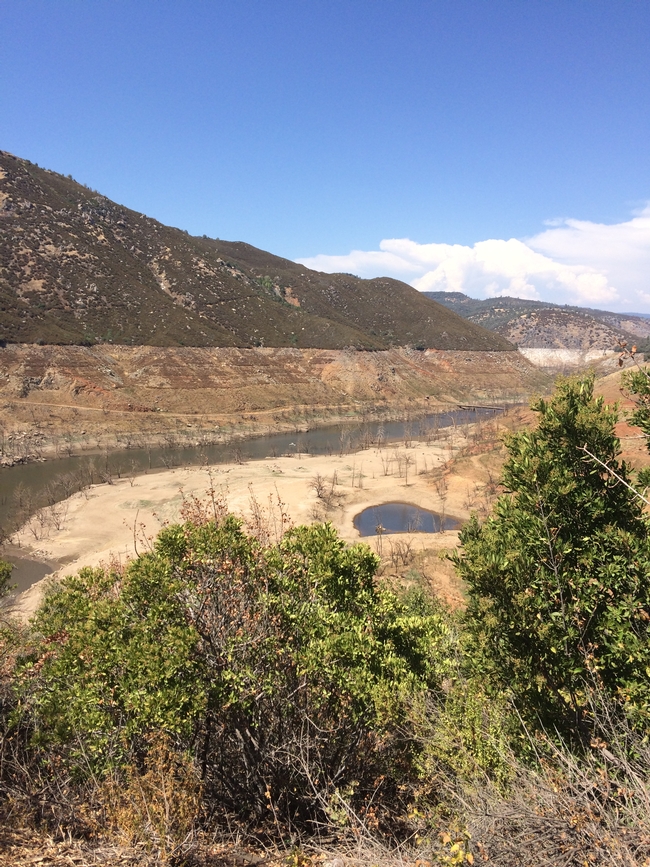
One of the most obvious signs of systemic stress, at least to me, are the water levels in our foothill reservoirs. After the first three years of this drought, we went into last winter with depressingly low water levels in most of our man made lakes. These reservoirs are critical for storing water for irrigation, human consumption, and downstream wildlife habitat. In normal years, they allow us to capture snow runoff and save it for use during the dry summer months. The winter of 2014-2015, however, brought virtually no snow to the Sierra Nevada – and consequently no spring runoff. I thought our reservoirs were low last summer; this summer is even worse. Last weekend, I drove across the Parrotts Ferry bridge over New Melones Reservoir (on the Stanislaus River between Calaveras and Tuolumne Counties). I was shocked to see that the water level had dropped below the old Parrotts Ferry bridge – I'd ridden across it as a kid, but didn't think I'd ever see it again once the New Melones Dam was built. Perhaps even more shocking – I could see the Stanislaus River flowing under the bridge.
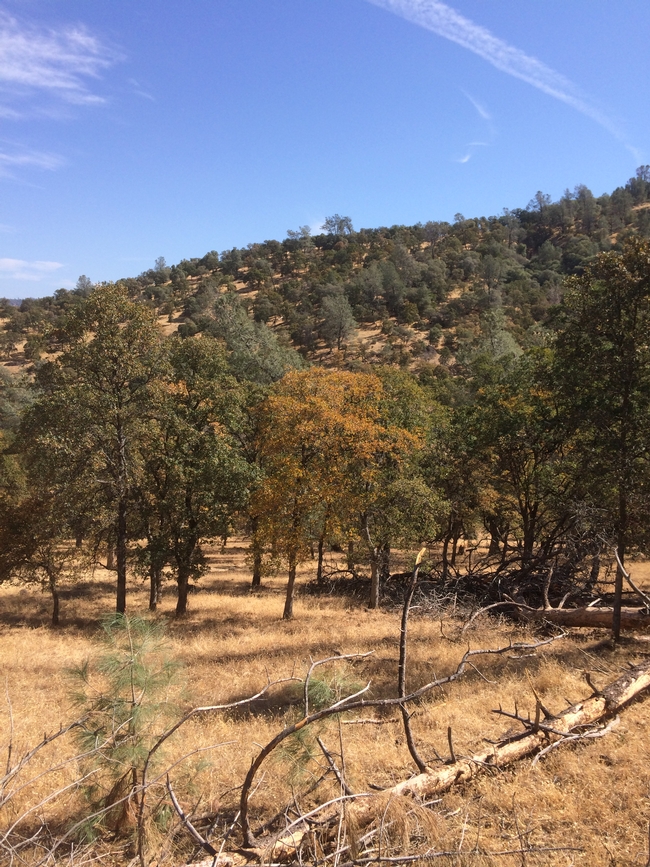
Closer to home, the oak trees in Auburn and at the Sierra Foothill Research and Extension Center are starting to turn color as if autumn were already here. When deciduous trees experience extremely dry conditions, they'll often shed their leaves early as a survival mechanism. The blue oaks and black oaks at SFREC are dropping leaves earlier this year than most of us can remember. Some of the trees are in full color; they make the hillsides seem like we're already in October. In addition to turning color and dropping leaves, we've seen more trees dropping entire branches (and some are even falling down entirely).
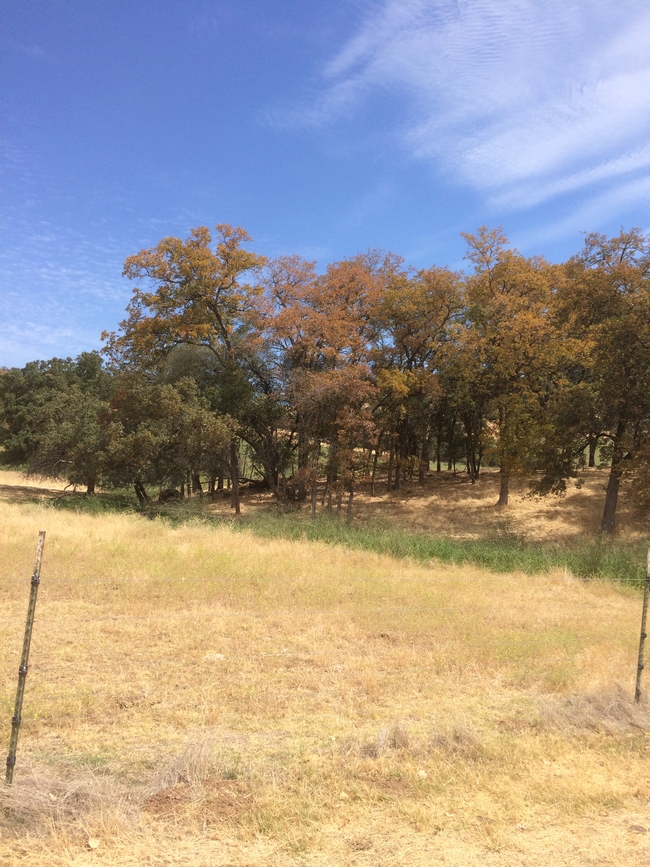
According to the National Weather Service, one of the strongest El Niños ever measured seems to be shaping up in the Pacific Ocean. Many in the media are reporting this phenomenon as if it's a sure bet – our drought is all but over! Unfortunately, the impacts of El Niño aren't so certain – Northern California is just about as likely to experience dry conditions as wet weather in an El Niño year. I'll believe we're having a wet winter when I'm still wearing my mud boots next April! In the meantime, I'll keep an eye out for additional signs of stress.
- Author: Dan Macon

This year, we have four distinct groups of cattle at SFREC. Each group is part of one or more research projects:
- We have cow-calf pairs that belong to the UC Davis Animal Science Department. These are fall-calving cows. In normal years, the calves are weaned in late May, and the cows are grazed on dry forage during the summer and fall. Currently, this herd is split into 3 groups – older cows with calves, second-calf heifers with calves, and open cows with calves.
- We have bred heifers also belonging to the UC Davis Animal Science Department. These heifers are typically grazed on irrigated pastures during the summer and through fall calving.
- We have outside heifers that are part of a foothill abortion vaccine trial. These heifers will be preg-checked in mid-April. Normally, the open heifers would be kept at SFREC until late May.
- We have steers that are part of a long term adaptive management and targeted grazing research project. Like the heifers, these steers would be kept at SFREC until late May in a normal year.
But this year is anything but normal! After a very promising fall (with normal germination of our annual grasses and near-normal forage growth through the end of December), we are now coping with a fourth year of drought. Since January 1, we've measured just 2.43 inches of precipitation (average for January-March is 11.69 inches). With the lack of rainfall, forage growth has slowed (total production through April 1 was 1400 pounds per acre, which is about 100 pounds less than normal for this time of year). Total production doesn't tell the whole story, however; the pastures that we've grazed since the first of the year haven't recovered as expected (which means we haven't returned to these pastures as expected). My colleagues who have worked at SFREC for a number of years tell me that the vegetation is at least 30 days ahead of schedule – in other words, our annual rangeland looks more like mid-May than early April. All of this means that this week's rain will help in some pastures, but it's “too little, too late” in others. Our peak standing crop (the total amount of forage grown during this growing season) will likely be far below our long term average of 3000 pounds per acre.
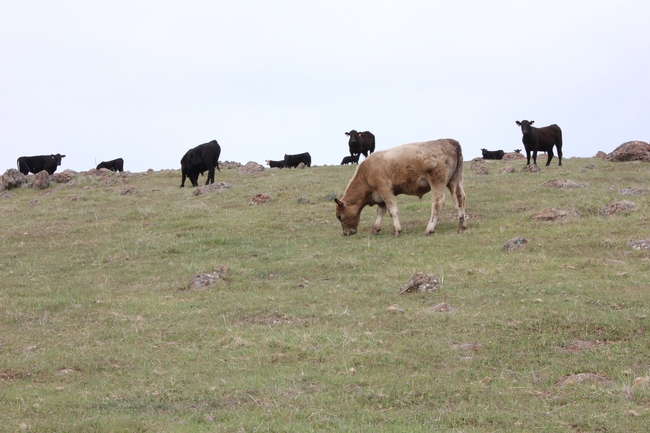
Based on this year's reality, we started fine-tuning our drought plan in early March. One of the key steps in our drought planning is to establish a critical date – a date by which we'll make some stocking decisions if we don't receive rainfall. In early March, we decided that if we hadn't received at least an inch of precipitation by April 1, we'd need to start taking action. Here are the steps we're looking at taking in the next 30 days (by May 1):
- Ship the open foothill abortion heifers 7-10 days following preg-check. This will allow us to take as many as 150 heifers off the pastures at SFREC.
- Ship some of the steers (at least those in pastures where feed is not re-growing) by early May. If we do happen to get some late-spring moisture, this would allow some regrowth for next fall. This week's rain may be enough to get us through to the end of May.
- Ship open cows and calves. There are only 13 pairs that fall into this category, but every little bit helps!
- Wean early. Some of the Animal Science calves already weigh more than 500 pounds. Another large group is between 450 and 500 pounds. Weaning the calves now and shipping them off SFREC, will reduce the nutritional demand on the cows, and will reduce the forage demand (both from cows and from big calves) on our rangeland.
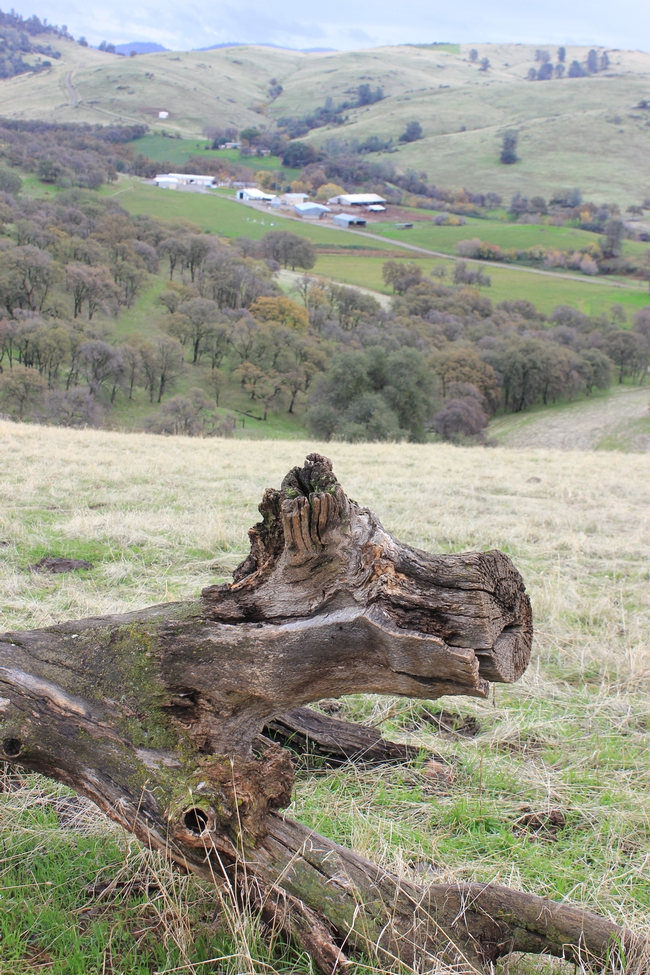
For more information on long-term weather and forage production trends in the Sierra Foothills click here. If you are interested in getting more information managing through low rainfall/forage years SFREC has a number of videos and publications that explore this topic.
To get more information about how producers can benefit from forage production data, click here.


